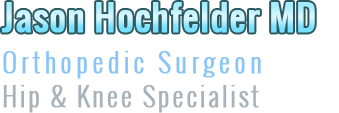Stem Cells
Stem Cells for Hip
The Healthy Hip
The hip joint is the largest weight-bearing joint in the human body. It is also referred to as a ball and socket joint and is surrounded by muscles, ligaments, and tendons. The thigh bone or femur and the pelvis join to form the hip joint.
The hip joint is made up of the following:
- Bones and joints
- Ligaments of the joint capsule
- Muscles and tendons
- Nerves and blood vessels that supply the bones and muscles of the hip
Hip Injuries
Any injury or disease of the hip will adversely affect the joint’s range of motion and ability to bear weight. The most common hip injuries/diseases include
- Hip Arthritis
- Labral Tear
- Trochanteric Bursitis
- Avascular Necrosis
- Inflamed Synovium
Stem Cells
Stem cells are present in all of us acting like a repair system for the body. However, with increased age sometimes the optimum amounts of stem cells are not delivered to the injured area. The goal of stem cell therapy is to amplify the natural repair system of the patient’s body.
Preparing for the Procedure
It is important that you stop taking any non-steroidal anti-inflammatory drugs (NSAIDs) at least two weeks before your procedure.
Preparing for a stem cell procedure is relatively easy and your doctor will give you specific instructions depending on your condition.
Stem Cell Procedure
The procedure begins with your doctor extracting stem cells from your own bone marrow. Bone marrow is usually aspirated from your hip region. Your doctor will first clean and numb your hip area. A needle is then introduced into an area of your pelvic bone known as the iliac crest. Bone marrow is then aspirated using a special syringe and the sample obtained is sent to the laboratory. In the laboratory, the aspirate is spun in a machine for 10 to 15 minutes and a concentrated stem cell sample is separated.
Your doctor then cleans and numbs your affected area to be treated and then, under the guidance of special x-rays, injects the stem cells into the diseased region. The whole procedure usually takes less than one hour and you may return home on the same day of the procedure.
Post-Operative Care
- You will most likely be able to return to work the next day following your procedure.
- You will need to take it easy and avoid any load bearing activities for at least two weeks following your procedure.
- You will need to refrain from taking non-steroidal, anti-inflammatory medications (NSAIDS) for a while as this can affect the healing process of your body.
Risks and complications
Stem cell therapy is generally considered a safe procedure with minimal complications, however, as with any medical procedure, complications can occur.
Some risks factors related to stem cell therapy include infection as the stem cells may become contaminated with bacteria, viruses or other pathogens that may cause disease during the preparation process.
The procedure to either remove or inject the cells also has the risk of introducing an infection to the damaged tissue into which they are injected. Rarely, an immune reaction may occur from injected stem cells.
Stem Cells for Knee
The Healthy Knee
The knee is made up of four bones. The femur or thighbone is the bone connecting the hip to the knee. The tibia or shinbone connects the knee to the ankle. The patella (kneecap) is the small bone in front of the knee and rides on the knee joint as the knee bends. The fibula is a shorter and thinner bone running parallel to the tibia on its outside. The joint acts like a hinge but with some rotation.
The knee is a synovial joint, which means it is lined by synovium. The synovium produces fluid lubricating and nourishing the inside of the joint. Articular cartilage is the smooth surfaces at the end of the femur and tibia. It is the damage to this surface which causes arthritis.
Knee Injuries
Any injury or disease of the knee will adversely affect the joint’s range of motion. The most common knee injuries/diseases include
- Knee Arthritis
- Ligament Tear
- Meniscal Tear
- Patellar Tendinitis
- Patellofemoral Instability
- Cartilage Injury
Stem Cells
Stem cells are present in all of us acting like a repair system for the body. However, with increased age sometimes the optimum amounts of stem cells are not delivered to the injured area. The goal of stem cell therapy is to amplify the natural repair system of the patient’s body.
Preparing for the Procedure
It is important that you stop taking any non-steroidal anti-inflammatory drugs (NSAIDs) at least two weeks before your procedure.
Preparing for a stem cell procedure is relatively easy and your doctor will give you specific instructions depending on your condition.
Stem Cell Procedure
The procedure begins with your doctor extracting stem cells from your own bone marrow. Bone marrow is usually aspirated from your hip region. Your doctor will first clean and numb your hip area. A needle is then introduced into an area of your pelvic bone known as the iliac crest. Bone marrow is then aspirated using a special syringe and the sample obtained is sent to the laboratory. In the laboratory, the aspirate is spun in a machine for 10 to 15 minutes and a concentrated stem cell sample is separated.
Your doctor then cleans and numbs your affected area to be treated and then, under the guidance of special x-rays, injects the stem cells into the diseased region. The whole procedure usually takes less than one hour and you may return home on the same day of the procedure.
Post-Operative Care
- You will most likely be able to return to work the next day following your procedure.
- You will need to take it easy and avoid any load bearing activities for at least two weeks following your procedure.
- You will need to refrain from taking non-steroidal, anti-inflammatory medications (NSAIDS) for a while as this can affect the healing process of your body.
Risks and complications
Stem cell therapy is generally considered a safe procedure with minimal complications, however, as with any medical procedure, complications can occur.
Some risks factors related to stem cell therapy include infection as the stem cells may become contaminated with bacteria, viruses or other pathogens that may cause disease during the preparation process.
The procedure to either remove or inject the cells also has the risk of introducing an infection to the damaged tissue into which they are injected. Rarely, an immune reaction may occur from injected stem cells.
















